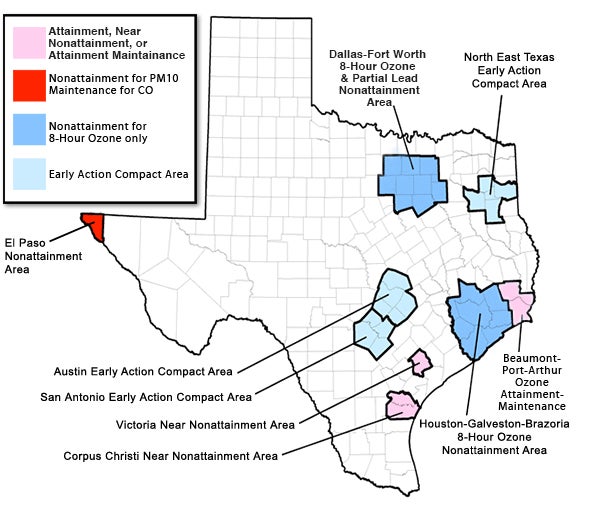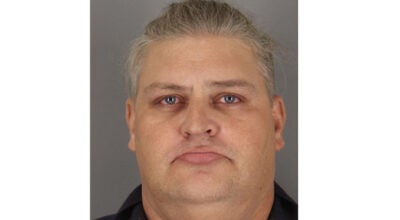Orange County at risk of exceeding, Federal Clean Air standards
Published 3:39 pm Saturday, June 8, 2019

- Graphic courtesy of Drive Clean Texas
From staff reports
Emissions from cars and trucks can make up close to half of the air pollution in some parts of the state. There are three areas—Houston/Galveston, Dallas/Fort Worth and El Paso—that do not meet federal clean air standards as established by the Clean Air Act.
Additionally—Austin, San Antonio, Victoria, Tyler/Longview, Beaumont/Port Arthur and Corpus Christi—are close to exceeding healthy levels of air pollutants. This includes the Orange County area.
That’s why TxDOT developed the Drive Clean Texas campaign, designed to demonstrate how simple changes in driving behaviors can have a big impact on vehicle emissions and air quality.
“As Texans hit the road this summer, Drive Clean Texas is asking everyone to help reduce vehicle air pollution,” said Texas Transportation Commissioner Jeff Austin III. “Making simple adjustments to the way we drive and maintain our vehicles can help us all get where we need to go and reduce air pollution along the way. It’s a win-win for our families and our wallets.”
TxDOT will be taking the hands-on, educational Drive Clean Texas Road Trip Challenge Game to cities around the state where air quality is an issue.
The game is a fun, interactive way to learn about reducing harmful vehicle emissions by taking a Drive Clean digital road trip on a large smartphone. Each time a wrong answer is selected, a puff of harmless “smoke”—representing vehicle emissions—is released into a giant, clear bubble encasing an actual sports car. Participants get hands-on training in basic tips in vehicle maintenance for optimal clean driving.
Drive Clean Texas suggests the following simple steps to help protect the state’s air quality:
- Keep vehicles well-maintained and inflate tires to recommended air pressure levels.
- Properly fuel vehicles by tightly sealing the gas cap.
- Stop at the click when fueling your vehicle. Overfilling the tank releases harmful fumes into the air.
- Drive smart by obeying speed limits.
- Avoid idling the vehicle for extended periods of time.
- Avoid aggressive driving with rapid starts and stops.
A large percentage of the air pollution in Texas comes from the more than 17 million motor vehicles registered in the state. Each vehicle has the potential to be a source of air pollution. However, poorly-maintained vehicles are the biggest contributors to the pollution problem.
The next time you see a car, truck, or bus anywhere in Texas with dirty smoke coming from its exhaust for more than 10 consecutive seconds, write down the license number, date, time, and city where you saw the smoking vehicle.
Report the smoking vehicle, within 30 days, by using the online reporting form (or the online reporting form in Spanish) or by calling 1-800-453-SMOG (7664). You do not have to give your name, and the report is free.
The TCEQ will then notify the owner that his or her vehicle may be contributing to air pollution by smoking excessively. The TCEQ will also provide the owner with information about how car maintenance will improve the vehicle’s performance.
The Clean Air Act requires EPA to set National Ambient Air Quality Standards (NAAQS) for pollutants that are common in outdoor air, considered harmful to public health and the environment, and that come from numerous and diverse sources.
The statute established two types of national air quality standards: primary standards and secondary standards.
South East Texas Regional Planning Commission Transportation and Environmental Resources Division formed an Air Quality Advisory Committee (AQAC) develop an integrated approach to managing the region’s air quality, in the early 1980s.
AQAC is a diverse, broad-based group composed of local elected officials, private industry, government, chambers of commerce, unions, concerned citizens, and environmental groups. In 1989, the AQAC successfully obtained voluntary funding from area industries and established an on-going Regional Meteorological and Air Quality Monitoring Network. The network is made up of numerous air monitoring stations throughout the area. With real-time data from these sites, SETRPC maintains a comprehensive database that enables the AQAC to accurately evaluate control strategies for meeting the federal clean air standards for ozone, according to its website.





